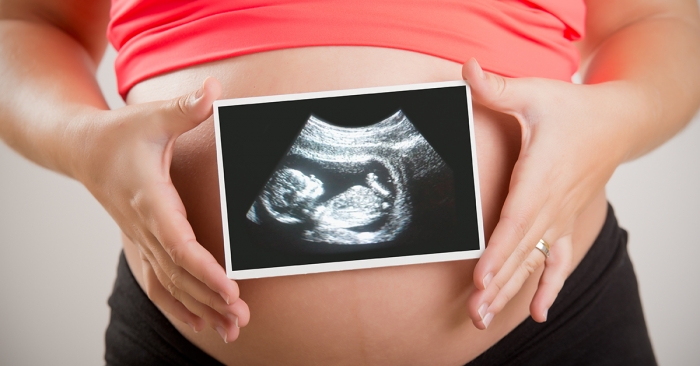As a woman approaches her due date, there are many concerns she may have about giving birth and safely delivering a healthy baby. If you are in your third trimester and getting close to full term, then you might be aware of the possibility of breech presentation. This condition affects a relatively small percentage of pregnant women, but that knowledge may not be enough to stop you from wondering: what happens if my baby is breech?
What Does Breech Mean?
When answering the question “what happens if my baby is breech?” the first thing that needs to be done is to find out what breech means in terms of the fetal position. As the American College of Obstetrics and Gynecology (ACOG) explains, breech presentation is when the baby is not head-down during birth. Instead of being in a position for the head to come through the birth canal first, a baby in breech presentation is positioned so that his or her feet, bottom, or both would come out first.
There are a few types of breech presentations that differ due to the exact position the baby is in and where his or her head is.
- Frank breech: The baby’s bottom is down and the legs are pointing up and near the head. This is the most common type of breech presentation.
- Footling breech: The baby is head up and has one or both of his or her legs hanging down.
- Transverse breech: The baby is lying horizontally in the uterus.
- Complete breech: The head is up, the bottom is down, and the legs are crossed.
- Oblique breech: The baby’s head is down but is pointed towards one of the mother’s hips
Risks Related to Breech Presentation
There are several risks associated with breech presentation in both vaginal and cesarean births.
Risks during vaginal delivery include cord prolapse, which happens when the umbilical cord is squeezed as the baby moves down the birth canal. The squeezing of the cord slows down the supply of oxygen and blood to the baby. Another complication associated with vaginal delivery of a baby with a breech presentation is that the baby may not move as easily through the birth canal, which can require the use of forceps or other tools.
Cesarean deliveries have risks as well, mostly related to it being a surgery that requires sedation or anesthesia. You can read more about this in our previous blog what to expect when you have a C-section.
What Can Cause Breech Presentation?
Breech presentation occurs in about 3 to 4% of full-term pregnancies. Some women are more likely to have a fetus in breech position. The following factors can contribute to an increased risk of breech presentation:
- Too much amniotic fluid
- Not enough amniotic fluid
- Two or more fetuses in the uterus
- Mother has been pregnant before
- Pregnancy is less than 37 weeks along
- Presence of uterine abnormalities such as fibroids
- The placenta is covering either a part of or all of the of the uterine opening (placenta previa)
What Are the Options if My Baby is Breech?
There are several ways to approach labor and delivery with breech presentation. The two most common are:
1. External Cephalic Version is Attempted
External cephalic version (ECV) is an attempt to turn the baby so that he or she is head down. Women who desire a vaginal birth often have ECV in attempt to stick to their birth plan. ECV is suggested for a fetus with breech presentation in pregnancies greater than 36 weeks.
Over half of ECV attempts are successful in getting the baby in a head-down position. But some babies may move back into breech presentation after this treatment is performed. Another attempt may be made, but it gets more difficult to perform ECV as the birth date approaches because there is less room for the baby to move.
ECV is performed by a healthcare professional who will use their hands to apply firm pressure to the abdomen so the baby will roll into a head-down position. More than one healthcare professional may be needed to help turn the baby and sometimes ultrasound guidance is used to determine the positioning.
Before ECV is attempted, the baby’s heart rate will be checked with fetal monitoring and it will be checked again after the attempt. In case a problem arises with the heart rate, a C-section may need to happen quickly. For this reason, ECV is often done in or near a delivery room.
Sometimes external cephalic version is not suggested. If there is more than one baby (twins or more), the placenta is not in the right place or has come away from the wall of the uterus, or if there are other concerns about the baby’s health, then ECV is not an option.
2. Cesarean Delivery is Planned
Another course of action used if a baby is breech is a planned cesarean delivery. There are times when a planned vaginal birth with a baby in a breech position is safe, but often a C-section is chosen due to the lower incidence of complications.
For More Information
At Raleigh OB/GYN Centre, we know that you will have concerns about your pregnancy, including what happens if your baby is breech. We have been dedicated to providing quality obstetric care to the women of the Raleigh area since 1974 and will be there with you every step of the way from preconception to delivery. If you want to speak to one of our doctors about any obstetric or gynecological concern, then you can call us at 919-876-8225. You can also request an appointment online.


